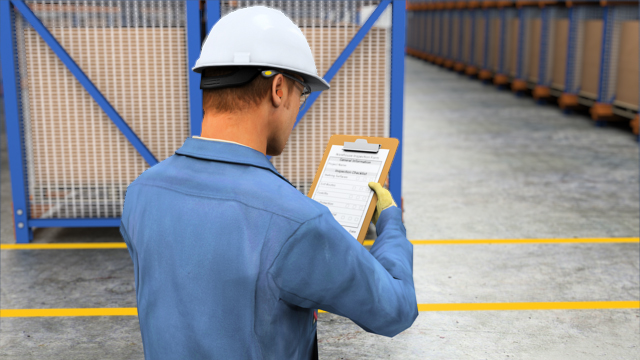




Safety Management: Safety Inspections and Observations
Accidents are caused by unsafe workplace conditions or unsafe behaviors. Inspections and observations allow you to be proactive by evaluating how safe your workplace is instead of waiting until someone gets hurt. This course will provide an overview and general guidelines for performing safety inspections and observations.
Request a demoCourse Details
Learning Objectives
List the two main causes of accidents Describe the purpose of safety inspections and safety observations Describe the differences between safety inspections and observations Describe how to perform safety inspections and observations List examples of what to look for while performing an inspection or observation
Specs
| Course Level | Intermediate |
| Languages | English |
| Compatibility | Audio, Video |
| Based on: | Industry Standards and Best Practices |
Key Questions
What is a safety inspection?
An inspection is a formalized procedure for identifying workplace hazards. There are three main types of inspections: one-time inspections, pre-use inspections, and periodic inspections.
What is a one-time inspection?
One-time inspections are performed before operating new or modified equipment or processes.
How often should periodic inspections be performed?
Periodic inspections are done at some regular interval to evaluate areas that have the potential to cause injuries. They should be done often enough to find hazards before they cause injures. For example, monthly inspections of departments in a manufacturing facility may be sufficient, but more frequent inspections are required for areas, like construction sites, that are constantly changing.
What is the purpose of safety observations?
The purpose of an observation is to identify and reinforce safe behaviors, and eliminate unsafe behaviors.
Who should perform inspections and observations?
Inspections should be performed by a team of people familiar with the work area. A safety observation should be performed by a supervisor or other trained employee. To have an effective proactive safety program, management must be committed to and employees must participate in inspections and observations.
Sample Video Transcript
Observations provide an opportunity to recognize and reinforce safe behaviors. Everyone must understand that safe behaviors prevent incidents. If you speed and weave in and out of traffic but don’t get in an accident, are you a safe driver or just lucky? When you see something done safely, tell the worker, and ask why they did it that way so the information can be shared. Praising safe behavior is much more effective than punishing unsafe behavior.
Additional Resources
Course Applies To
Demos + Pricing
Learn more about our courses, get pricing, and see our platform.











